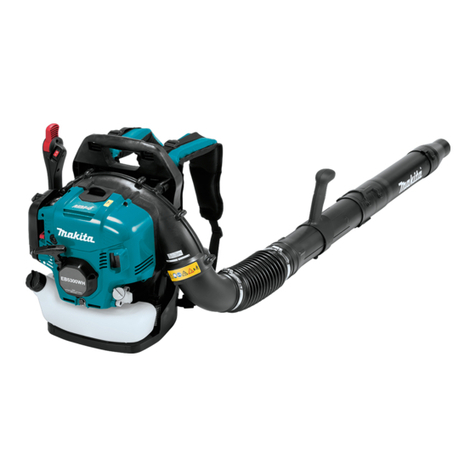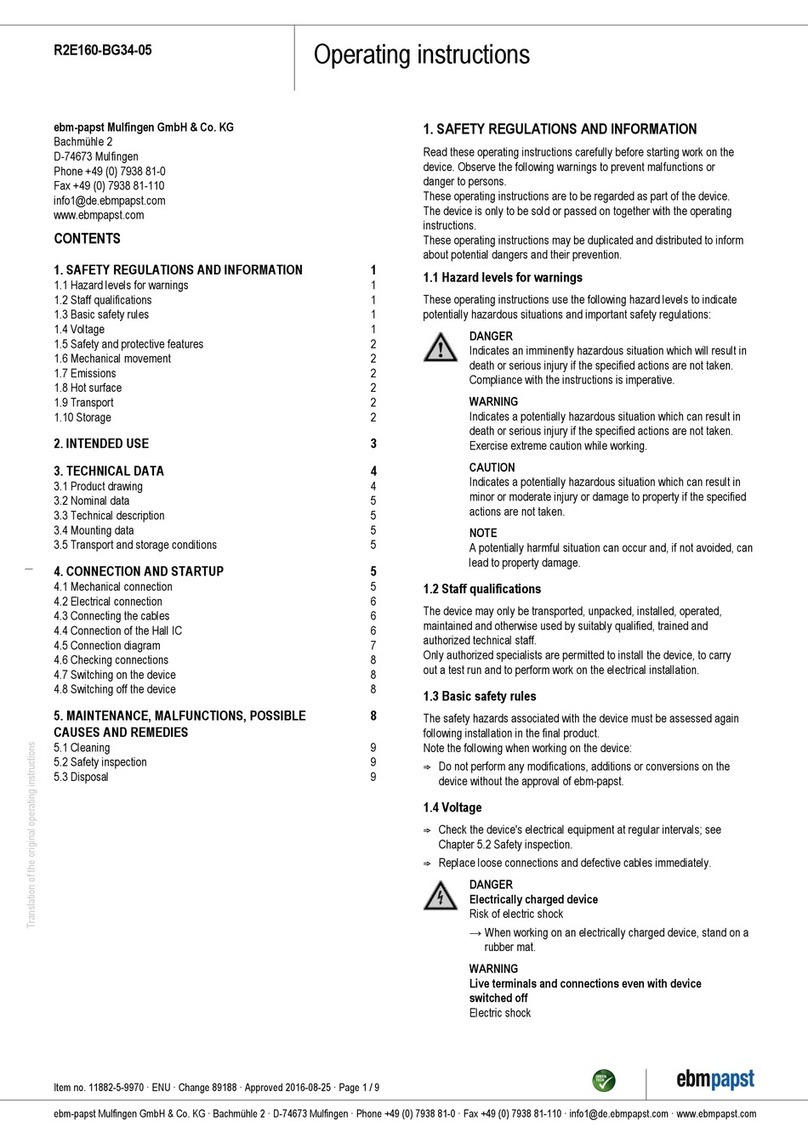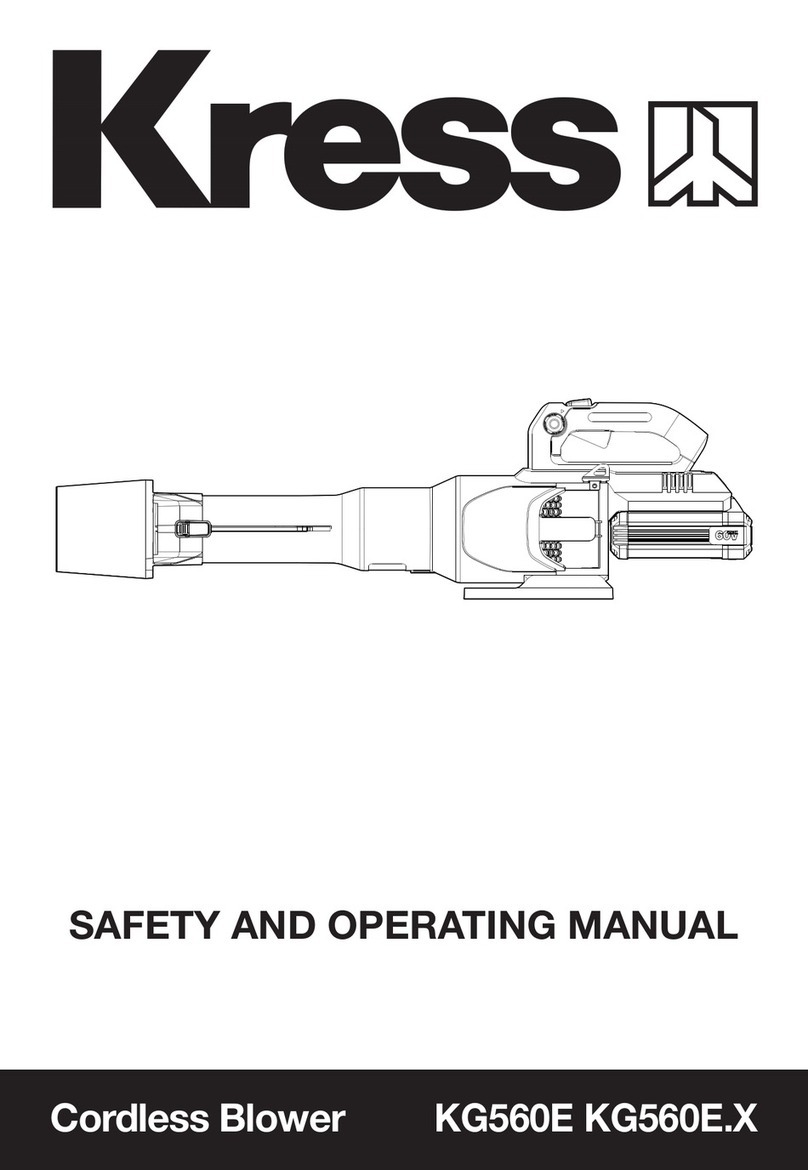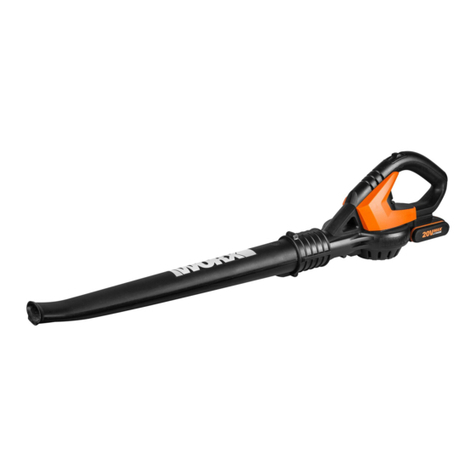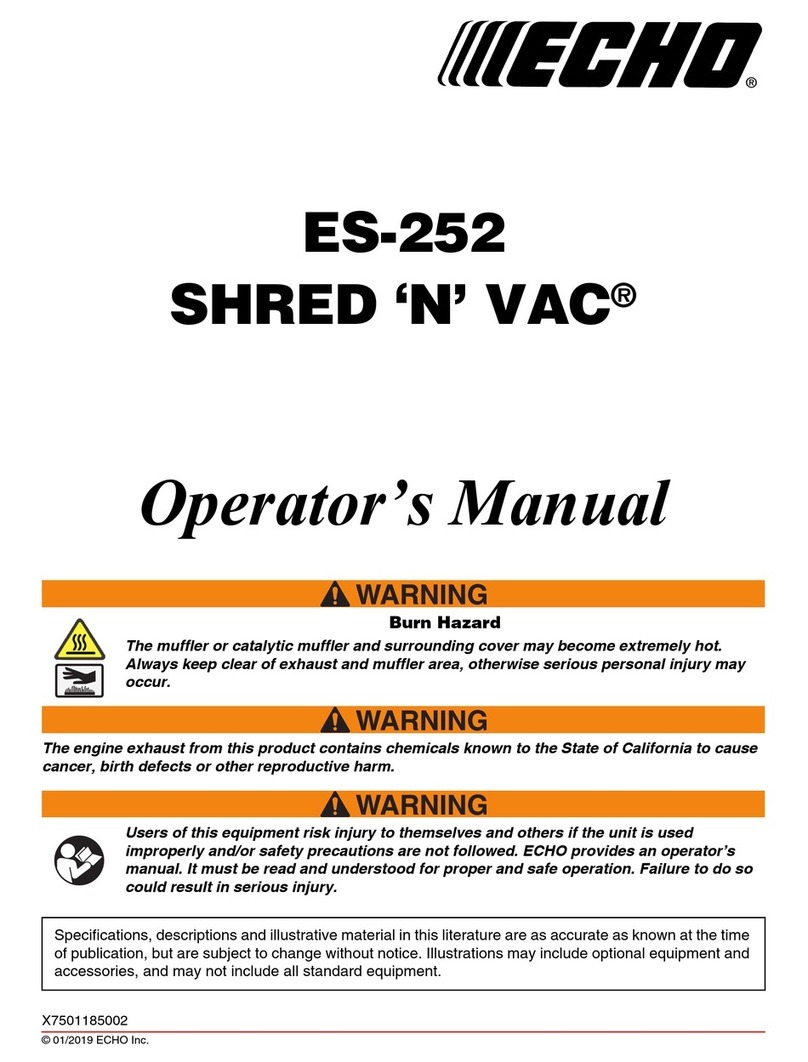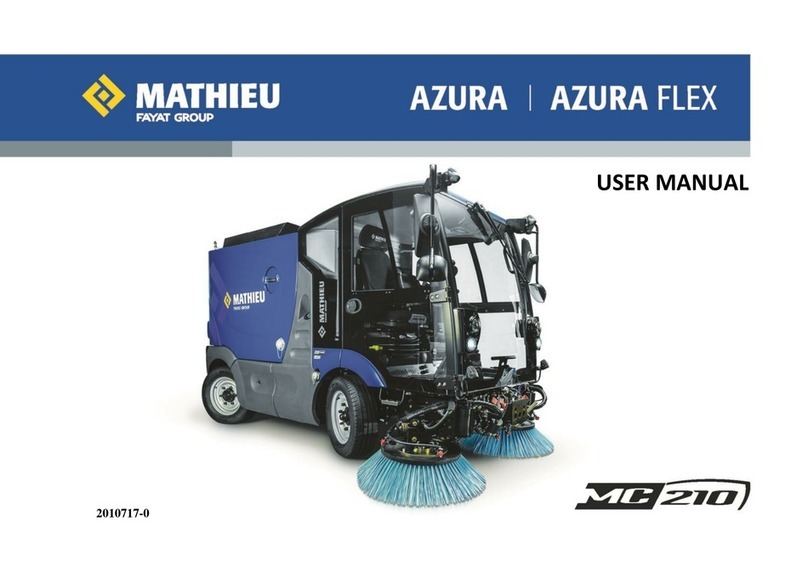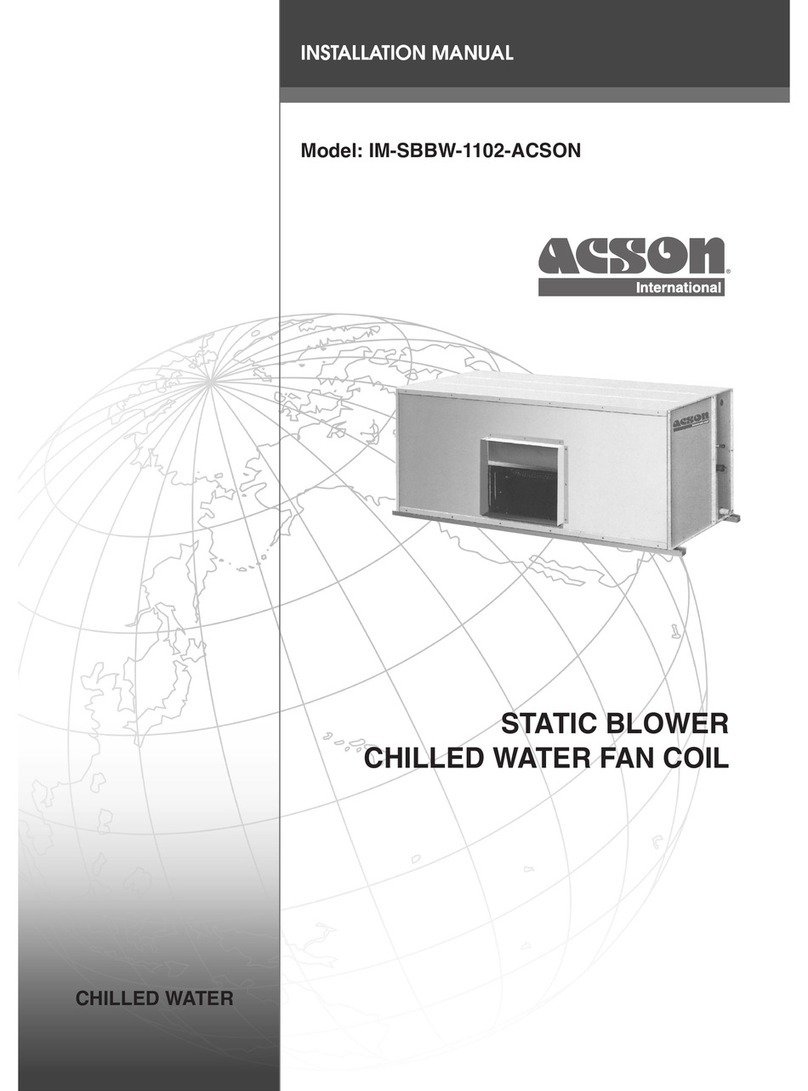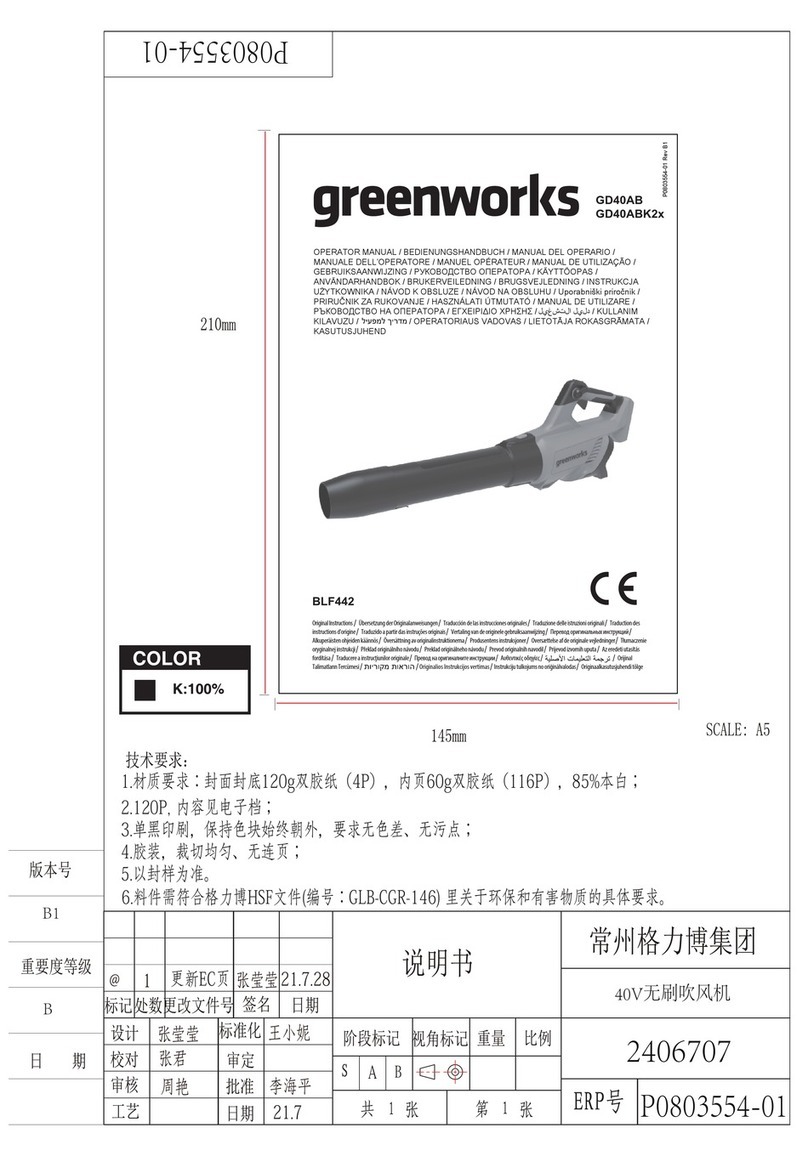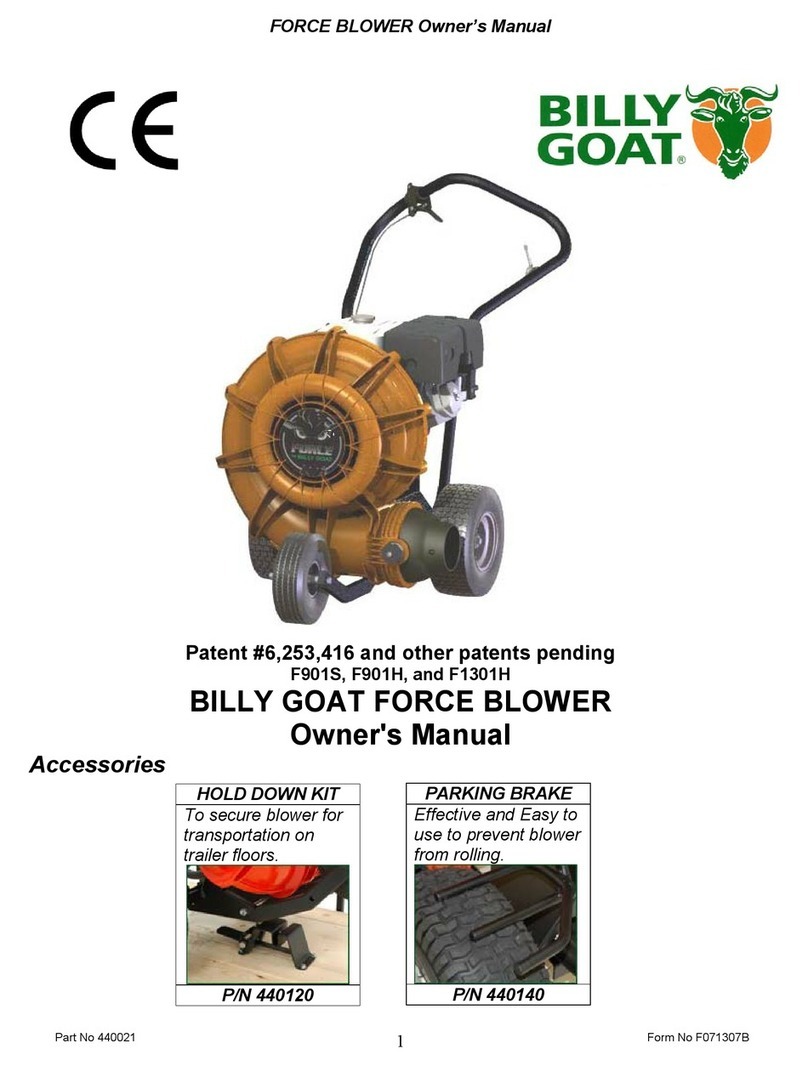BMS alpha CR User manual

Contents
Contents
1General information...........................................................................7
1.1 Operating instructions............................................................................................. 7
1.2 Address ..................................................................................................................... 7
1.3 Revision status ......................................................................................................... 7
1.4 Typographical conventions..................................................................................... 8
1.5 Explanation of symbols ........................................................................................... 9
1.6 Limitation of liability............................................................................................... 11
1.7 Copyright protection .............................................................................................. 11
1.8 Conformity............................................................................................................... 12
1.9 Customer service.................................................................................................... 12
1.10 Personnel conventions.......................................................................................... 13
1.11 Personnel requirements ........................................................................................ 14
2Safety................................................................................................16
2.1 General information................................................................................................ 16
2.2 Intended use............................................................................................................ 16
2.3 Improper use........................................................................................................... 16
2.4 Obligations of the machine operator.................................................................... 17
2.5 Responsibility of personnel .................................................................................. 18
2.6 Personal protective equipment............................................................................. 19
2.7 Residual hazards .................................................................................................... 20
2.7.1 Warning signs on the machine ................................................................................. 20
2.8 Security risks .......................................................................................................... 22
2.8.1 Risks from moving components ............................................................................... 22
2.8.2 Risks from thermal hazards...................................................................................... 22
2.8.3 Risks from noise ....................................................................................................... 22
2.8.4 Risks from electrical current ..................................................................................... 23
2.8.5 Risks due to hazardous substances......................................................................... 23
2.8.6 Risks from pressure vessels..................................................................................... 23
2.9 Safety and protective devices............................................................................... 24
2.9.1 Emergency stop button............................................................................................. 24
2.9.2 Safety switch............................................................................................................. 25
2.9.3 Breakaway cable ...................................................................................................... 26
2.9.4 Hose ......................................................................................................................... 26
2.10 Working safely ........................................................................................................ 27
2.11 Spare parts.............................................................................................................. 28

Contents
2.12 Structural changes ................................................................................................. 28
2.13 Disposal................................................................................................................... 28
3Technical data..................................................................................29
3.1 Chassis.................................................................................................................... 29
3.1.1 Standard ................................................................................................................... 29
3.1.2 Feeder ...................................................................................................................... 30
3.1.3 Feeder/scraper ......................................................................................................... 31
3.2 Machine ................................................................................................................... 32
3.3 Identification of the machine................................................................................. 33
3.3.1 Nameplate ................................................................................................................ 33
3.3.2 Machine equipment .................................................................................................. 34
4Layout and function ........................................................................35
4.1 Personnel ................................................................................................................ 35
4.2 Overview.................................................................................................................. 35
4.3 Chassis.................................................................................................................... 36
4.4 Machine ................................................................................................................... 44
4.4.1 Options ..................................................................................................................... 46
4.5 Functional sequence.............................................................................................. 47
4.6 Operating elements ................................................................................................ 48
4.6.1 Machine .................................................................................................................... 48
4.6.2 Multifunction display ................................................................................................. 52
4.6.3 Scraper radio system................................................................................................ 53
4.7 Menus ...................................................................................................................... 55
4.7.1 General display area................................................................................................. 56
4.7.2 Main menu................................................................................................................ 57
4.7.3 Submenu .................................................................................................................. 59
4.7.4 Diagnostic menu....................................................................................................... 60
4.7.5 Messages ................................................................................................................. 62
5Transport..........................................................................................63
5.1 Transport inspection.............................................................................................. 63
5.2 Transport restraints................................................................................................ 63
6Driving operation.............................................................................64
6.1 Personnel ................................................................................................................ 64
6.2 General instructions............................................................................................... 64
6.3 Checks before coupling......................................................................................... 65
6.4 Coupling .................................................................................................................. 66
6.5 Prepare driving operation...................................................................................... 72

Contents
6.6 Notes for driving operation ................................................................................... 74
6.7 Uncoupling and parking ........................................................................................ 75
7Work mode.......................................................................................80
7.1 Personnel ................................................................................................................ 80
7.2 Personal protective equipment............................................................................. 80
7.3 Safety instructions for work mode ....................................................................... 80
7.4 Connecting delivery hoses.................................................................................... 83
7.5 Prepare work operation ......................................................................................... 86
7.5.1 Preparing the feeder for filling .................................................................................. 92
7.6 Commissioning....................................................................................................... 93
7.7 Operation in working mode................................................................................... 95
7.7.1 Filling the mixing and delivery vessel....................................................................... 96
7.7.2 Closing the mixing and delivery vessel................................................................... 105
7.7.3 Switch on the mixing unit........................................................................................ 106
7.7.4 Delivery of the mix.................................................................................................. 107
7.7.5 Venting the mixing and delivery vessel .................................................................. 109
7.7.6 Open the mixing and delivery vessel...................................................................... 111
7.8 Interrupting the delivery of mix........................................................................... 111
7.9 Stopping the working operation ......................................................................... 112
7.10 Winter operation ................................................................................................... 116
8Cleaning..........................................................................................117
8.1 Personnel .............................................................................................................. 117
8.2 Personal protective equipment........................................................................... 117
8.3 Safety instructions for cleaning.......................................................................... 117
8.4 Air extraction connection .................................................................................... 118
8.4.1 Connection of an external device........................................................................... 119
8.5 Cleaning the machine........................................................................................... 120
8.5.1 Cleaning the vessel ventilation unit ........................................................................ 120
8.5.2 Cleaning the mixing and delivery vessel ................................................................ 121
8.5.3 Cleaning the upper and lower air............................................................................ 121
8.5.4 Cleaning the delivery hoses ................................................................................... 122
9Troubleshooting ............................................................................124
9.1 Personnel .............................................................................................................. 124
9.2 Personal protective equipment........................................................................... 124
9.3 Safety instructions for troubleshooting............................................................. 124
9.4 List of possible errors.......................................................................................... 125
9.5 Blockage in the conveyor machine .................................................................... 131

Contents
9.5.1 Cause for blockage................................................................................................. 131
9.5.2 Find a blockage ...................................................................................................... 132
9.5.3 Remove blockages................................................................................................. 133
9.5.4 Recommissioning after blockage removal.............................................................. 136
9.5.5 Avoiding blockage................................................................................................... 136
9.6 Battery empty........................................................................................................ 137
10 Maintenance...................................................................................138
10.1 Personnel .............................................................................................................. 138
10.2 Personal protective equipment........................................................................... 138
10.3 Safety instructions for maintenance and servicing.......................................... 138
10.4 General instructions............................................................................................. 141
10.5 Maintenance schedules ....................................................................................... 142
10.5.1 Maintenance schedule chassis............................................................................... 142
10.5.2 Maintenance schedule machine............................................................................. 145
10.5.3 Inspection after 500 operating hours...................................................................... 149
10.5.4 Inspection every 1000 operating hours .................................................................. 152
10.5.5 Inspection every 1500 operating hours .................................................................. 155
10.6 Lubrication schedule............................................................................................ 157
10.7 External inspections............................................................................................. 159
10.8 Maintenance and repair work.............................................................................. 160
10.8.1 Changing tyres........................................................................................................ 161
10.8.2 Checking the tyre pressure..................................................................................... 162
10.8.3 Oil change (compressor, motor and hydraulic oil).................................................. 163
10.8.4 Battery maintenance............................................................................................... 164
11 Storage ...........................................................................................165
11.1 Personnel .............................................................................................................. 165
11.2 Personal protective equipment........................................................................... 165
11.3 Storing the machine ............................................................................................. 165
11.4 Preserving the machine ....................................................................................... 167
11.5 Disposal................................................................................................................. 168
12 Optional versions ..........................................................................169
12.1 alpha E32 and alpha E63 .......................................................................................... 169
12.1.1 Interior view ............................................................................................................ 170
12.1.2 Control cabinet........................................................................................................ 171
12.1.3 Operating elements ................................................................................................ 172
12.1.4 Current connection ................................................................................................. 175
12.1.5 Notes on the delivery hoses ................................................................................... 176
13 Lists ................................................................................................177

Contents
13.1 List of figures........................................................................................................ 177
14 Appendix ........................................................................................179
14.1 Declaration of conformity .................................................................................... 180
14.2 Drawings................................................................................................................ 181
14.2.1 BMS alpha CR (standard) ........................................................................................ 181
14.2.2 BMS alpha CR B (feeder)......................................................................................... 182
14.2.3 BMS alpha CR B/S (feeder/scraper)........................................................................ 183
14.3 Circuit diagrams ................................................................................................... 184
14.3.1 Circuit diagrams alpha E32 and alpha E63................................................................. 184

Contents

General information
1
Operating instructions
1.1
7
1 General information
1.1 Operating instructions
These operating instructions are valid for the machine named on the cover
sheet.
The operating instructions convey important notes for the safe and efficient
handling of the machine. It is part of the machine and must be kept in legible
condition and accessible in the immediate vicinity of the machine for the
personnel working there at all times.
The prerequisite for safe working on and with the machine is the compliance
with all specified safety instructions and directives.
The operating instructions are the basis for all actions on the machine and
the basis for all training courses that take place on the machine. Personnel
must therefore have read the operating instructions carefully before starting
any work.
In addition, the national accident prevention regulations applicable at the
operating site of the machine and general safety regulations must be
observed.
1.2 Address
BMS Bau-Maschinen-Service AG
Daimlerstraße 10
33378 Rheda-Wiedenbrück, Germany
Tel.: +49(0)5242/9646-0
Fax: +49(0)5242/9646-29
Email: info@bmsbaumaschinen.de
1.3 Revision status
Date
Chapter
Reason
Responsible
19/05/2020
Operating instructions
Initial version
unique

1
General information
1.4
Typographical conventions
8
1.4 Typographical conventions
In order to be able to optimally work with the operating instructions, the
following clarifications on typographical conventions must be observed.
List
−First level bullet points.
−Second level bullet points.
Instruction
1. Step 1 of the instruction
2. Step 2 of the instruction
3. Step 3 of the instruction
The sequence of action steps must be adhered to.
Tips
➢Tips for situations that allow you to work efficiently.

General information
1
Explanation of symbols
1.5
9
1.5 Explanation of symbols
Explanatory symbols
Indicates a hotline.
Indicates maintenance work.
Indicates an inspection e.g. before starting work (as part of maintenance).
Indicates maintenance work that may be carried out only by service
personnel (see section 1.11) or by a specialist workshop authorized by BMS.

1
General information
1.5
Explanation of symbols
10
Warnings and safety instructions
The following symbols are used in these operating instructions to illustrate
hazards and notes:
DANGER
Designates a danger situation that results in severe physical injuries
or death.
WARNING
Designates a possible danger situation that can result in severe
physical injuries or death.
CAUTION
Designates a possible danger situation that can result in slight to
moderate injuries.
NOTE
Designates a situation that can result in material damage.

General information
1
Limitation of liability
1.6
11
1.6 Limitation of liability
All information and notes in these operating instructions were compiled
taking into consideration valid standards and regulations, the state of the art
as well as our long-standing insights and experiences.
The obligations as well as the general terms and conditions agreed in the
supply contract and the regulations valid at the time of contract conclusion
apply.
The manufacturer will not assume any liability for damage resulting from:
−failure to observe the operating instructions,
−use other than the intended one
−personnel that are not trained and not instructed,
−unauthorized/technical modifications and changes,
−improper assembly, commissioning, operation and maintenance of the
machine,
−Failure to observe the notes in the operating instructions regarding
transportation, storage, assembly, commissioning, operation,
maintenance. This applies in particular to the 1st inspection after 50
operating hours,
−use of not approved/incorrect spare parts that do not meet the
manufacturers specifications.
1.7 Copyright protection
These operating instructions are protected by copyright for BMS-Bau-
Maschinen-Service AG.
The operating instructions include regulations and drawings or sections of
drawings of a technical nature that may not be copied, distributed or used
without authorization for competition purposes or disclosed to third parties
either in part or in full.
The operator of the machine is permitted to make copies –even in excerpts
–expressly for internal use in connection with the operation of the machine.
BMS-Bau-Maschinen-Service AG reserves the right to grant permission for
the use for publications or for forwarding copies or information from these
operating instructions to third parties.
Any violations will result in a claim for compensation for the manufacturer.
Additional claims remain reserved.

1
General information
1.8
Conformity
12
1.8 Conformity
The declaration of conformity is based on the applicable guidelines (with
their associated amending directives) in the version at the time of
commissioning. Please refer to the declaration of conformity for information
on the individual guidelines.
The declaration of conformity is in the Appendix.
1.9 Customer service
Our customer service is available for technical information.
In addition, our employees are always interested in new information and
experiences that result from the application and which could be valuable for
the improvement of our add-on devices.
Tel.: +49(0)5242/9646-0
Fax: +49(0)5242/9646-29
Email: info@bmsbaumaschinen.de
If questions arise in practice, you can also contact BMS directly.
Service/workshop:
Telephone: +49(0)5242/9646-17
Email: werkstatt@bmsbaumaschinen.de
Spare parts warehouse:
Telephone: +49(0)5242/ 9646-15
Email: versand@bmsbaumaschinen.de

General information
1
Personnel conventions
1.10
13
1.10 Personnel conventions
Manufacturer
BMS-Bau-Maschinen-Service AG is the manufacturer of the machine and is
hereinafter referred to as “manufacturer”.
Personnel
Personnel are all persons who operate and work on the machine. The
different requirements for these persons are described in Section 1.11.
System operator
The operator is any natural or legal person who uses the machine or makes
it available to third parties for use. The operator is responsible for the safety
of the operator or third parties during use.

1
General information
1.11
Personnel requirements
14
1.11 Personnel requirements
Any activities on and with the machine must be performed only by persons
who can carry out their work properly and reliably and who meet the listed
requirements.
The responsibilities are assigned with specification of the symbols listed
below in the beginning of each chapter.
Target group
Symbol
Operating personnel
O
Specialist personnel
F
Specialist personnel for electrical equipment
E
Service personnel
S
Chapters "Safety" and "Technical data" are an exception. These chapters
are relevant for all target groups.
Operating personnel
Operating personnel are persons who were instructed thoroughly and
verifiably by the operator in their assigned tasks and possible hazards.
Operating personnel are responsible for operating the machine.
Tasks above and beyond that may be performed by operating personnel
only if these are specified in the operating instructions and if the operator
has expressly assigned them to the person.

General information
1
Personnel requirements
1.11
15
Specialist personnel
Specialist personnel are persons one who perform the assigned work
properly, detect possible hazards on their own and prevent personal or
material damage based on their professional training, knowledge and
experience as well as their knowledge of the pertinent regulations.
Their tasks include the identification, containment and elimination of errors
and malfunctions.
They are also responsible for the scheduled and standardized maintenance
to reduce and avoid incidents.
Specialist personnel for electrical equipment
Specialist personnel for electrical equipment (qualified electricians) are
persons who, based on their technical training, knowledge and experiences
as well as knowledge of the pertinent rules and regulations, are capable of
properly performing work on electrical systems, detecting possible hazards
independently and preventing personal and material damage from electrical
voltage.
All works on the electrical equipment must principally only be carried out by
a qualified electrician.
Service personnel
Authorised service personnel of BMS Bau-Maschinen-Service AG are
considered to be service personnel.
Their tasks include the identification, containment and elimination of errors
and malfunctions.
They are also responsible for the scheduled and standardized maintenance
to reduce and avoid incidents.
Unauthorized persons
Persons who were not instructed are unauthorised persons.
In case of doubt, talk to persons who might be unauthorised. Expel
unauthorised persons from the working area.
Any person other than those described in the section "Personnel
requirements" is considered to be unauthorized. The operator of the add-on
device will be solely responsible for any resulting damage.

2
Safety
2.1
General information
16
2 Safety
2.1 General information
This section provides an overview of important safety aspects for the
protection of the operator and personnel against possible hazards and the
safe and failure-free flow of operation.
Failure to observe the listed directives, warnings, and safety instructions can
result in considerable hazards.
2.2 Intended use
The BMS alpha CR is a screed machine used for the production and transport
of building materials. Only the materials listed below may be mixed and
transported with the machine:
−Screed up to a grain diameter of 16 mm.
−Other materials are permitted only in consultation with and with the
written approval of the manufacturer.
The machine must not be operated in closed rooms due to the exhaust
gases produced.
The compressed air connection may only be used to convey material to the
machine. Any other use is only permitted after consultation with and with the
written consent of the manufacturer.
2.3 Improper use
Any use of the add-on device other than the one described in “intended use”
is deemed to be inappropriate use. The operator is solely liable for any
resulting damage.

Safety
2
Obligations of the machine operator
2.4
17
2.4 Obligations of the machine operator
The machine is used in the industrial field. The machine operator is therefore
subject to the legal obligations of industrial safety.
Next to the warnings and safety instructions in these operating instructions,
safety, accident prevention and environmental guidelines valid for the
application area of the machine must be adhered to.
The operator must -
−obtain information on the valid industrial safety regulations.
−determine possible additional hazards resulting from the special
operating conditions at the operating site of the machine with a hazard
assessment.
−implement the necessary behavioural requirements for the operation of
the machine at the operating site in the operating instructions.
−check during the entire application period of the machine whether the
issued operating instructions comply with the current version of
regulations.
−adjust the operating instructions, insofar as necessary, to new
regulations, standards and operating conditions.
−clearly regulate and define the responsibilities for installation, operation,
maintenance and cleaning of the machine.
−ensure that all employees working on the machine have read and
understood the operating instructions. In addition, the operator must
verifiably train and inform personnel working on the machine about
possible hazards at regular intervals.
−provide the specified and recommended protective equipment for
personnel assigned to work on the machine.
The operator must ensure that:
−the machine is always in technically flawless condition.
−the vehicle with which the machine is towed is approved by the
Technical Control Board (TÜV) and is suitable for approval in
accordance with German traffic regulations (StVO).
−the machine is serviced according to the specified maintenance
intervals.
−all safety devices of the machine are checked regularly for
completeness and function.
−Replace damaged or illegible pictograms, marks, signs or labels
immediately.

2
Safety
2.5
Responsibility of personnel
18
2.5 Responsibility of personnel
Next to the warnings and safety instructions in these operating instructions,
safety, accident prevention and environmental guidelines valid for the
application area of the device must be adhered to.
In particular, personnel must:
−obtain information on the valid industrial safety regulations.
−adhere to the behavioural requirements in the operating instructions for
the operation of the machine at the operating site.
−properly exercise the assigned responsibilities for the operation,
maintenance, and cleaning of the machine.
−have read and understood the operating instructions before starting to
work for the first time,
−use the stipulated protective equipment. It must be checked regularly
and replaced if damaged. In particular, hearing protection must be worn
when operating the machine.
−avoid abnormal postures when working.
Furthermore, all employees working on the machine are within the scope of
their tasks responsible for
−ensuring that the machine is in perfect technical condition.
−that machine being serviced according to the specified maintenance
instructions.
−all safety devices being checked regularly for completeness and
function.
−order, cleanliness and sufficient workplace lighting being ensured.
In case of malfunction of the machine the personnel must
−notify the competent authority of the malfunction.

Safety
2
Personal protective equipment
2.6
19
2.6 Personal protective equipment
Working requires wearing personal protective equipment in order to
minimize health hazards. Therefore:
−Before starting any work, put on the respective specified protective
equipment properly and wear it during work.
−In addition, always observe the signs with pictograms for personal
protective equipment in the working area without fail.
Industrial safety clothing
Closely fitting work clothing with low tear strength, with narrow sleeves
and no protruding parts, predominantly as protection against getting
caught by moving machine parts.
Do not wear rings, necklaces or other jewellery.
Solid protective gloves
To protect hands against rubbing, abrasions, scratches, grazes, cuts,
punctures or similar superficial skin injuries.
Safety footwear
To protect feet against injuries from falling parts and against slipping and
falling on slippery surfaces.
Ear protection
To protect against hearing damage.
Safety goggles
To protect against injuries to the eyes from parts flying around, particles,
fluid splashing or escaping compressed air.
Mouthguard
To protect against lung damage.
Industrial safety helmet
To protect against head injuries, for example during maintenance work in
the machine.

2
Safety
2.7
Residual hazards
20
2.7 Residual hazards
The machine was subjected to a risk assessment. The hazards determined
in doing so were, in as much as possible, removed and detected risks
reduced. But the machine still harbours residual risks which are described in
the following section.
The warnings and safety instructions listed in here and in the action chapters
of these instructions must be observed without fail in order to prevent
possible damage to health and dangerous situations.
Danger zones which cannot be avoided due to the construction of the
machine are marked with warning signs.
2.7.1 Warning signs on the machine
CAUTION
Risk of injury through illegible signs.
Labels and signs that have become blurred or illegible no longer
sufficiently mark danger points and cannot indicate possible risks of injury.
−Keep pictograms, safety, warning and operating instructions in
perfectly legible condition at all times.
−Replace damaged or illegible pictograms, marks, signs or labels
immediately.
Pictogram
Location
Explanation
On the battery,
On the generator
Dangerous electrical voltage
warning
On the motor
Hot surfaces warning
At the front
Hand injury warning
On the battery
Warning against burns
This manual suits for next models
2
Table of contents
